#thoughtexperiment
Explore tagged Tumblr posts
Text
Is Free Will an Illusion? A Day in the Life of Your Decisions.
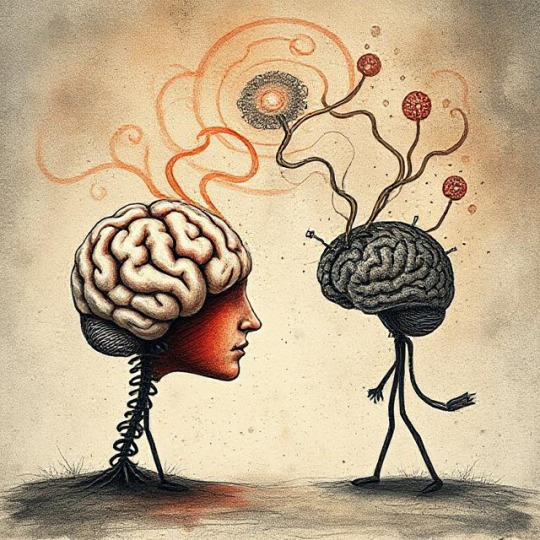
A Choice: Morning Snooze
Alarm goes off, you are still half asleep, and you stretch your right hand out to reach the little button marked "Snooze." Did you do that based on your decision, or did your brain respond on autopilot by now, conditioned by excessive sleep deprivation? Neuroscientists will argue that the brain made that call something like milliseconds before consciousness kicks in. So, was it you who actually decided, or did your brain go into action because the situation called for it?
The next in line is the choice of breakfast. You stand in front of your fridge, staring at it, and caught up in thought about the meal between eggs and cereals. You choose cereals. On what basis? Probably because you saw a commercial for it last night. Or probably because your body is craving some sugar after long fasting. Or keys to choices, even if unaccepted, could already be chosen on your behalf by previous experiences and biological programming.
Commute: Driving or Your Instincts?
It is very likely that you don’t think of every little thing: pressing the gas, switching lanes, stopping at a red light. For the most part, your brain relatively runs your commute by remote, with defenses lowered. After taking the same route every day, your body seems to just know where to go. Is that really free will, or rather is it just you executing pre-programmed behaviors, like a sophisticated biological GPS?
Let’s take it further: suddenly, you decide to take a different route. Aha! That was free will. But—wait!—was it? What if your brain already calculated that the other route would probably be preferred based on past experiences of being stuck by traffic patterns or subconscious stress levels? Maybe just “randomly” picking that route was a less random choice than it originally appeared.
Midday: The Illusion of Choices
As you come towards lunchtime, and you begin to browse a menu, so many options! You feel like you are in control-no doubt, you get to choose what to eat. Let's take this apart:
Your upbringing has influenced your preferences, your past meals, and what type of culture exposure you had as well as from whom you receive the meal.
Such cravings of your body are ruled by biological factors such as blood sugar levels and hormones.
Though there could be marketing influencing your decision-you may have seen a burger being advertised earlier and now you are leaning toward it, unknowingly.
Insofar as free will is a summing up of past experiences, biological needs, and external nudgings, how free truly are your choices?
Afternoon: Can You Will Yourself to Work Harder?
You sit at your desk, trying to concentrate. You tell yourself-I will be productive by my choice. But do you truly? Studies suggest our ability to focus is governed by neurotransmitters, brain structure, and even how little sleep we got last night. On some days, no matter how much we will ourselves to concentrate, our brains just can't comply.
Even decisions to move towards motivation are suspect: Did you choose to be motivated today, or were you happening to be on the right side of the dopamine and serotonin balance? If you had gotten less sleep or a different genetic predisposition, would you even be able to join work, have concentration, and work?
The Night: Interaction and Subconscious Scripts
You are with friends after work. Every interaction, every joke told, every opinion given- these are conscious choices, aren't they? Or do they come from experience, social conditioning, and subtle cues of body language developed over decades by other people?
Oh, you laughed at a friend's joke. Was that a conscious choice? Or was your brain lining up all possible social cues and producing the right answer? Deeper still-were you free to decide what kind of sense of humor you liked, or was it influenced by the environment you grew up in?
Night: Do You Decide to Overthink?
As you're lying in bed, you're having multiple thoughts racing through your mind. You'll play scenes from the day, analyze conversations, plan for tomorrow-even think about whether you made "the right" choices throughout the day.
But if each decision were merely an automatic response to the past chemistry of your brain, subconscious biases, and environmental triggers, was there ever a "right" decision? Or were you just along for the ride?
So, Is Free Will an Illusion?
Come on, who hasn't debated about that before? For centuries, this has been a subject of deliberation among philosophers. Neuroscientists are now saying that many decisions we make may occur before we become fully conscious of their existence. Determinists hold that everything we do is the set of dominoes set in motion by a preceding cause, so free will doesn't really exist at all. But far from being the correct opinion, there are some philosophers who believe that as long as one feels they have free will, their choices being tainted by biological and past effects is no sin.
So, what to take from this? Perhaps free will is an illusion. Perhaps we are only the sum of experiences, subconscious programming, and biological forces. But so what? If life were to illusion us into feeling we do have choices, maybe that's the punchline.
Come on, when your alarm rings tomorrow morning, is it or is it not a possibility you won't hit snooze?
#FreeWill#Philosophy#Determinism#Consciousness#Neuroscience#MindAndBrain#SelfAwareness#LifeChoices#IllusionOfFreeWill#ThoughtExperiment#PhilosophicalDebate#SocraticMethod#ExistentialQuestions#PhilosophyOfMind#BrainScience#DailyDecisions#Choice#SelfControl#CognitiveScience#PersonalChoice#MentalState#AutopilotMind
2 notes
·
View notes
Text
🌍 Mapping 13 Countries Inside Ukraine 🇺🇦: A Fascinating Thought Experiment! 🌍
Ever wondered how big Ukraine really is? Let's play a game of geopolitical Tetris! 🎮 📍 Countries Inside Ukraine's Borders 📍
🇦🇱 Albania finds its place in the Northwest, specifically in Volhynia.
Historical Note: Like Ukraine, Albania also struggled for its independence and faced various invasions.
2. 🇨🇿 Czechia snugly fits in the West, in the regions of Galicia-Podolia.
Did You Know?: Both the Czech Republic and Ukraine are Slavic countries with historical ties that span over a thousand years. They have shared moments of solidarity, especially during the Velvet Revolution and Ukraine's own struggle for democracy. The Czech civil society has often been supportive of Ukraine's European aspirations, and both nations have a rich folklore tradition.
3. 🇸🇮 Slovenia nestles in the Southwest, in Transcarpathia.
Cultural Insight: Slovenia and Ukraine share a love for mountainous landscapes.
4. 🇦🇹 Austria takes its spot in the North, covering areas like Polesia, Kyiv, and Siveria. Historical Insight: the Austrian Empire once controlled the region of Galicia, which is now part of modern-day Ukraine. The Austrian rule has left a lasting impact on the culture and architecture of the region.
5. 🇸🇰 Slovakia finds its home right in the Center of Ukraine.
Historical Ties: Slovakia and Ukraine share a border and have a complex history of interaction.
6. 🇷🇸 Serbia is located in the Black Sea Coast and Zaporizhzhia region.
Conflict Legacy and External Influence: Both countries have recent histories of conflict and are still dealing with its aftermath. Russia often leverages shared historical narratives to influence Serbian politics, further complicating Serbia's geopolitical stance.
7. 🇲🇪 Montenegro fits into Southern Bessarabia/Budjak.
Tourism Angle: Montenegro is a tourism gem, something Ukraine is aspiring to become.
8-9. 🇨🇾 Cyprus and 🇹🇷 Northern Cyprus share the southern part of Kherson region.
Political Intrigue: The division of Cyprus into two entities echoes Ukraine's own territorial issues.
10. 🇭🇺 Hungary is situated in the East, covering Poltava region and Sloboda Ukraine.
Historical and Current Ties: Hungary ruled over Transcarpathia for centuries, a region primarily inhabited by Ukrainians. During its rule, Hungary implemented policies aimed at assimilating the local population. Even today, Hungarian politicians occasionally make territorial claims against Ukraine and other neighboring countries.
11-12. 🇮🇱 Israel and 🇵🇸 Palestine are located in the Azov Sea region.
Historical Trauma: Prior to World War II, Ukraine had one of the largest Jewish populations in the world. In many cities, Jews made up between 20% to 50% of the population. Tragically, most were exterminated by German Nazis during the Holocaust, with estimates suggesting that around 1.5 million Ukrainian Jews were killed.
13. 🇦🇲 Armenia finds its place in Crimea.
Historical Trauma: Both Ukraine and Armenia have faced historical tragedies, including genocides and wars.
📊 By the Numbers 📊
Total Area: 511,000 km² (That's 92,000 km² less than Ukraine! Enough room left for Switzerland and Denmark 🇨🇭🇩🇰)
Population: 66.1 million (That's 42% more than Ukraine! 🤯)
Wealth: Only Austria 🇦🇹 and Israel 🇮🇱 are considered wealthy. The rest range from average to poor.
GDP: A staggering $1.9 trillion (nominal) and $2.8 trillion (PPP), which is 9 times Ukraine's GDP pre-Russian invasion. 💰
🤔 What Does This All Mean? 🤔
All these countries have faced historical challenges similar to Ukraine, especially the scars left by the World Wars. Yet, their paths have diverged significantly, leading to different economic and social outcomes.
💬 Your Thoughts? 💬
What do you think led to such drastic differences? Share your thoughts, theories, or even personal stories related to these countries.
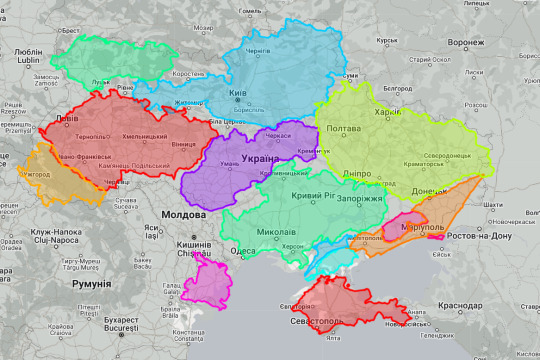
4 notes
·
View notes
Text
🌌 Simulation Theory: Are We Living in a Cosmic Game? 🎮


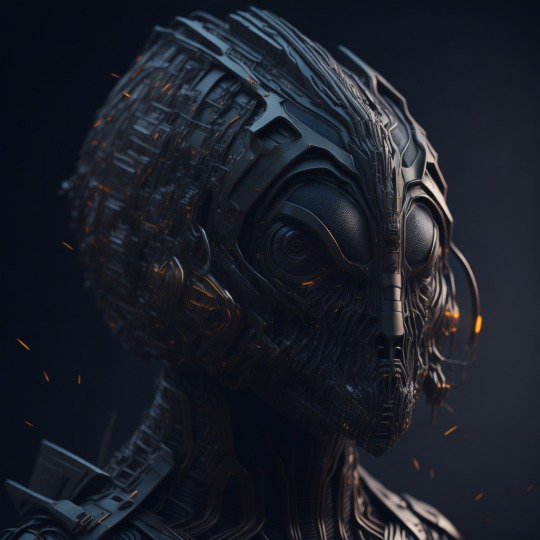
Have you ever wondered if our reality is nothing more than an intricate simulation, a digital playground crafted by an unfathomably advanced civilization? 🤔 What if our lives, our experiences, and everything we perceive are just lines of code, carefully constructed to mimic the complexities of existence? 🕹️
It's a mind-bending concept has captured the imagination of many. Just think about it - if beings far more technologically advanced than us could create such a simulation, how would we ever know for sure? 🤯
As we delve into the depths of this thought experiment, questions arise challenging the very fabric of our understanding. Could there be glitches or anomalies in the simulation we mistake for supernatural events or unexplained phenomena? Could familiarity be a mere glitch in the matrix, causing us to relive moments which never should have happened in the first place? Failures, poverty, sadness or sorrow. Imagine you have never had to loose, being disrespected or felt low, you have never made a mistake or had a wrong thought, your responses to any of the impulses or external reality have never mislead you to any of the possible 'traps', where your spirit knowing no fear freely develops, having a platform to expand and create the most beautiful realms. 🔄
Imagine a civilization so advanced that their simulation is indistinguishable from what we perceive as "real." Would our consciousness be genuine, or would it merely be a simulation of consciousness? 🧠 If we are but characters in this grand cosmic game, who are the puppeteers controlling our every move? 👾

While it might sound like science fiction, prominent figures, scientists, and philosophers have seriously entertained the idea of the simulation hypothesis. But let's remember, as fascinating as this concept is, we have no concrete evidence either confirming or disproving it. 🚫
So, as we ponder the mysteries of our existence, we find ourselves in a paradoxical situation. The very act of searching for evidence within the simulation could be part of the simulation itself. 🌀
Perhaps the truth lies beyond our current comprehension, hidden within the matrix of reality. Until we can peek behind the curtain, all we have are questions and speculation. But who knows, one day, we might just crack the code and uncover the ultimate truth. Until then, let's continue to explore, wonder, and question the nature of our own reality. 🌟
2 notes
·
View notes
Text





A speculative collection exploring potential figures who could align with certain archetypes from biblical prophecy and geopolitical analysis in a near-future context. Each image represents a conceptual portrait of someone who might wield significant influence in a world shaped by rapidly advancing technology, shifting global power dynamics, and heightened social anxieties. These are not predictions, but thought experiments designed to spark discussion about the intersection of power, belief, and the potential for manipulation in our increasingly complex world. From tech moguls to religious leaders, these figures raise questions about the nature of authority, the allure of charismatic figures, and the importance of critical thinking in a world saturated with information.
#speculativefiction#geopolitics#prophecy#thoughtexperiment#nearfuture#technology#artificialintelligence#digitalcurrency#globalpolitics#religiousstudies#charismaticleaders#informationcontrol#powerdynamics#socialcommentary#conceptart (if applicable)#characterdesign (if applicable)#worldbuilding#dystopian (if applicable)#cyberpunk (if applicable)#2025#futuretrends#conspiracy (use with caution)
0 notes
Text
The Socket Test: A Mirror of Consciousness
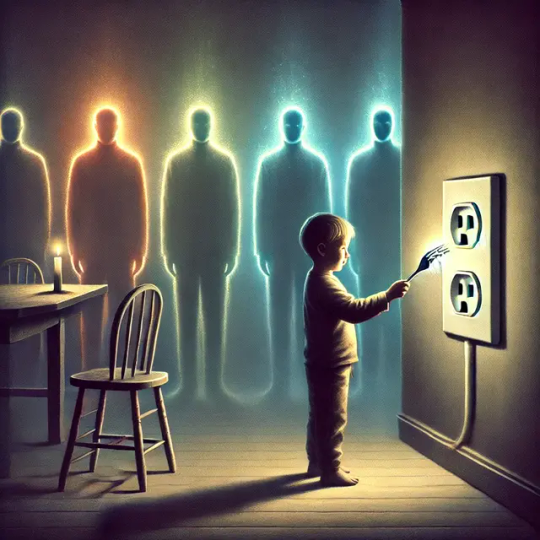
Picture this: A room with a child reaching for an electrical socket, fork in hand. Now imagine every adult on Earth cycling through this room, one by one. Their reaction to this scene reveals everything about who they are, their level of understanding, and most crucially—their level of consciousness.
This isn't merely a thought experiment. It's perhaps the most fundamental test of human awareness and responsibility. In every situation, in every system, there's always a child and a socket—potential harm that only the truly conscious can recognize and prevent.
The Four Levels of Response
The Bystanders (Level 1-10)
They stream through first. Some don't even notice the child. Others see but fail to grasp the danger. Many assume someone else will handle it. These are the same individuals who observe systemic problems and shrug them off, who watch financial systems exploit the vulnerable and mutter, "that's just how things work." Their consciousness hasn't evolved enough to recognize their role in preventing harm.
The Hesitant Learners (Level 20-30)
They sense the wrongness. Their gut tells them something isn't right. But they freeze. Questions paralyze them: Is it their place to act? What if they're wrong? What if they overstep? You see these people daily—those who understand enough to be uncomfortable with the status quo but not enough to take action.
The Guardians (Level 40-50)
Their response is immediate and instinctive. They don't just prevent the immediate danger—they teach. They explain. They ensure this situation can't repeat itself. These individuals see beyond immediate solutions to systemic changes. They recognize that protection isn't just about stopping immediate harm—it's about building better systems that make such harm impossible.
The Saboteurs (Level -10)
A darker presence exists. Some might actually encourage the child, finding humor in potential harm. Others might see the teaching opportunity but deliberately mislead. These are the ones who profit from others' ignorance, who perpetuate harmful systems because they benefit from them.
The Universal Pattern
Once you understand this test, you start seeing the child and the socket everywhere:
In financial systems designed to slowly drain value from those who trust them
In educational structures that stifle rather than nurture potential
In social structures that perpetuate harm through ignorance
In any situation where harm continues because those who see it choose not to act
The real power of this test lies in its universality. What matters isn't the specific danger, but rather the capacity to:
Recognize potential harm
Feel responsible for preventing it
Take immediate action to protect
Teach others to understand and prevent future harm
Work toward systems that make such dangers impossible
The Awakening
Here's the crucial thing about this awareness—once it activates, whether through chosen study or forced awakening, you can't turn it off. Once you start seeing the children reaching for sockets in every broken system, you can't unsee them. Once your consciousness expands to recognize patterns of potential harm, you can't contract it back to comfortable ignorance.
Being a Guardian isn't a choice once your consciousness expands to that level—it's an inevitable expression of your upgraded awareness. Every situation presents a new test. A new child. A new socket. A new opportunity to either step up or stand back.
The Mirror
We're all in that room right now. The socket represents our failing systems. The child is our collective future. And the test isn't just about what you do—it's about who you become in the process of doing it.
The world doesn't need more bystanders or hesitant observers. It needs those whose consciousness has evolved—whether by choice or circumstance—to the level where protecting and teaching becomes their natural state of being.
This test isn't just a metaphor. It's a mirror. It shows us exactly who we are and, more importantly, who we've become through our consciousness evolution.
The only question is: When you look in that mirror, what do you see? And more importantly, what are you compelled to do about it?
Take Action Towards Financial Independence
If this article has sparked your interest in the transformative potential of Bitcoin, there's so much more to explore! Dive deeper into the world of financial independence and revolutionize your understanding of money by following my blog and subscribing to my YouTube channel.
🌐 Blog: Unplugged Financial Blog Stay updated with insightful articles, detailed analyses, and practical advice on navigating the evolving financial landscape. Learn about the history of money, the flaws in our current financial systems, and how Bitcoin can offer a path to a more secure and independent financial future.
📺 YouTube Channel: Unplugged Financial Subscribe to our YouTube channel for engaging video content that breaks down complex financial topics into easy-to-understand segments. From in-depth discussions on monetary policies to the latest trends in cryptocurrency, our videos will equip you with the knowledge you need to make informed financial decisions.
👍 Like, subscribe, and hit the notification bell to stay updated with our latest content. Whether you're a seasoned investor, a curious newcomer, or someone concerned about the future of your financial health, our community is here to support you on your journey to financial independence.
Support the Cause
If you enjoyed what you read and believe in the mission of spreading awareness about Bitcoin, I would greatly appreciate your support. Every little bit helps keep the content going and allows me to continue educating others about the future of finance.
Donate Bitcoin: bc1qpn98s4gtlvy686jne0sr8ccvfaxz646kk2tl8lu38zz4dvyyvflqgddylk
#TheSocketTest#Consciousness#Philosophy#SelfAwareness#GuardianMindset#Responsibility#SystemicChange#SocialAwakening#UniversalPatterns#Reflection#LevelUpConsciousness#AwarenessEvolution#ProtectAndTeach#HumanPotential#ThoughtExperiment#DeepThinking#LifeLessons#CallToAction#ChangeTheWorld#BlogPost#financial empowerment#financial experts#blockchain#financial education#finance#digitalcurrency#cryptocurrency#globaleconomy#bitcoin#unplugged financial
1 note
·
View note
Text
Proposal for the Afrasian Primordial Embodied Conlang
For development in one generation under unpruned childish minds, to demonstrate the speedy development of complex systems from fine strictures
Introduction
The Afrasian Primordial Embodied Conlang proposes a novel mapping of phonemes to gestures, translating the points and manners of articulation in human speech into corresponding motions and positions of the arm, wrist, and hand. This linguistic experiment aims to create a physically embodied language that demonstrates the emergence of complexity from simplicity and explores the potential of gestural communication as a direct analog to vocal speech. By rooting the system in Ehret’s implied theory of primordial mono- and bi-consonantal roots, the conlang emphasizes the generative power of minimal elements, showcasing how language can rapidly develop into a complex, critical system within a single generation.
This project highlights three key points:
Simple, well-defined systems can give rise to rich, complex structures.
Language is inherently adaptive and inventive, with speakers naturally innovating to fill gaps and extend expressive capacity.
The timeline of early language development cannot be linearly extrapolated; languages can achieve full expressive power swiftly under the right conditions.
The Afrasian Primordial Embodied Conlang is not designed to dictate meaning or structure but to provide a fertile framework for user-driven emergence. Through its use, the project seeks to illuminate universal principles of systems behavior, the parallels between vocal and gestural articulation, and the profound interplay between physical embodiment and linguistic abstraction. Further, the emphasis on universal systems behavior stands in contrast to and debunks Chomskian Universal Grammar.
Goals
Demonstrate Embodied Language Formation Create a gestural language that mirrors the articulatory mechanics of speech. The gestures will map to phonemes based on the physical properties of articulation:
Consonants will correspond to specific movements or contacts of joints and digits, e.g., shoulder pops for glottal stops, thumb-to-finger gestures for bilabials and dentals.
Vowels will be expressed through hand shapes and wrist rotation, with open hand positions reflecting round vowels and cupped or compact shapes for unrounded vowels.
Voicedness and Fricativity will be conveyed by the speed and smoothness of the overall limb motion.
Enable Spontaneous Language Growth Provide a foundational set of linguistic elements, analogous to primordial roots, that speakers can combine and expand upon. This includes a minimal base lexicon of productive elements such as “here,” “there,” “go,” and basic modifiers (e.g., “-ly”). The system is designed to foster emergent grammar and complexity through use.
Model System Universals Investigate universal principles of system dynamics, such as the emergence of order from simple rules, criticality, and the interplay of constraints and creativity. By observing the language’s evolution, we can draw insights applicable across disciplines, from linguistics to information theory and systems philosophy.
Challenge Linear Development Models Show that language development is not a slow, gradual process requiring tens of thousands of years. By creating a living system within one generation, the project will counter assumptions about early human language being primitive or embryonic for millennia. Instead, it will illustrate the immediacy with which a fully functional communicative system can arise.
Proposed Framework
Articulatory Mapping
Thumb = Tongue: Mirroring the dexterity and central role of the tongue, the thumb will perform contacts and taps against other fingers.
Three Fingers = Lips and Teeth: The pinky will represent dental articulations, while the middle and ring fingers will handle labial and alveolar sounds.
Hand Rounding for Vowels: Open, rounded hand shapes correspond to rounded vowels, while compact shapes represent unrounded vowels. Wrist rotation indicates vowel qualities such as frontness or backness.
Gestural Grammar
Reserve the index finger for pointing, deixis, or any purpose invented by users.
Allow combinations of gestures to indicate grammatical relationships, modifiers, or emphasis.
Speed and fluidity of gestures reflect linguistic qualities like voicedness and fricativity.
Emergent Flexibility
The many unassigned possible gestural elements leave ample "blank" articulatory space for users to innovate, ensuring the language grows organically in response to user needs and context.
Encourage experimentation and adaptation, recognizing that meaning will naturally crystallize through interaction and repetition.
The basic vocabulary will be extremely impoverished, of simple choices (with simple meanings like "move, hit, rise, two," etc) from this list:
These Afrasian elements and words will be translated directly and literally as possible from the anatomy of the mouth and throat to that of the arm and hand.
The framework lays the foundation for a generative, embodied language experiment, opening new avenues for understanding language emergence, adaptation, and the deep connection between body and communication. It will address Lakoff's theory of embodiment by providing a point of comparison to disembodied large language model cognition.
0 notes
Text
Can AI Like Heights AI Transform Personalized Education?

AI tools like Heights AI are changing the way courses are created and delivered. But how far can these AI capabilities go in transforming education? Let’s explore this thought experiment.
Scenario: Imagine a scenario where every student in an online learning platform is provided with a unique, AI-generated learning path that is entirely tailored to their individual learning style, pace, and knowledge level. The AI continuously adapts to provide each student with the most relevant content and assessments.
Analysis:
Potential Benefits:
Personalized Learning: Every learner would receive content and assessments customized to their needs, which could dramatically improve retention and learning outcomes.
Scalable Education: AI can help educators scale personalized education to reach larger audiences, making quality education accessible to more people.
Challenges:
Human Interaction: While AI can personalize content, the value of human interaction—empathy, motivation, and real-time feedback—may be difficult to replicate fully.
Overreliance on AI: Relying too much on AI for learning might pose challenges in ensuring the right balance between technology and personal guidance.
Do you think that AI tools like Heights AI could lead to fully personalized education, or is the human element irreplaceable in teaching? Let us know your thoughts!
Join the discussion about the role of AI in education with Heights AI. Share your views on how AI should shape learning experiences!
#HeightsAI#AIinEducation#FutureOfLearning#PersonalizedLearning#EdTech#Discussion#TeachingInnovation#AI#EducationTechnology#ThoughtExperiment
0 notes
Text
Flat Earth Gravity 101 part 1
Ever wondered what it would take for a flat Earth to have the same gravitational pull as our spherical home? Let's dive into a quirky thought experiment that merges fantasy with physics.
Gravity 101: On our globe, gravity pulls us towards the center, making us stick to the surface no matter where we stand. But what if the Earth was not a sphere, but a flat, infinite plane? How thick would this plane need to be to mimic the gravity we know and love?
Using the average density of Earth (5510 kg/m3) and some nifty physics equations, we find a surprising answer. For a flat Earth to have the same gravitational pull (9.81 m/s2), it would need a thickness of about 4,246 kilometers. That's roughly a third of the actual Earth's radius!
Why It Matters: This mental gymnastics isn't just for fun. It challenges us to understand gravity in new ways and appreciate the peculiarities of our three-dimensional, spherical world.
Thought-Provoking Follow-Ups:
How would weather behave on a flat Earth?
What would happen to day/night cycles and seasons?
How would our perception of space and distance change on an infinite plane?
This exploration isn't just about questioning the shape of the Earth—it's about expanding our understanding of physics in the unique world we inhabit. Let's keep questioning, exploring, and learning!

0 notes
Text
This article represents an interdisciplinary approach, weaving together philosophy, education, psychology, and technology to explore complex questions about intelligence, consciousness, and the future of AI.
#AbstractConcepts#ArtificialIntelligence#ChineseRoomArgument#CognitiveScience#ConsciousnessDebate#HumanLikeAI#InterpretationOfAI#JohnSearle#LanguageProcessing#PhilosophicalImagery#Philosophy#SimulatedComprehension#SymbolManipulation#ThoughtExperiment#Understanding#frnwh
1 note
·
View note
Text
youtube
THOUGHT EXPERIMENTS IN CIVILIZATION
In Search of Lost Civilizations
In the second thought experiment of this series, I speculate on the problems that would be involved in searching for extinct agricultural (non-industrialized) civilizations on alien worlds. I consider three climatological scenarios that have forced the extinction of civilizations—snowball worlds, water worlds, and desert worlds—through the disruption of settled agriculturalism. To set this up I discuss some methodological preliminaries on satellite archaeology, and I finish with some of the methodological lessons learned.
Quora: https://philosophyofhistory.quora.com/
Discord: https://discord.gg/r3dudQvGxD
Links: https://jnnielsen.carrd.co/
Newsletter: http://eepurl.com/dMh0_-/
Video: https://youtu.be/P-8VMQhHM30
Podcast: https://open.spotify.com/episode/7xvj7pmafJCOJvDtWNWlZ1?si=EpWqgxqfT3-gYkrfjn7PmQ
Episode: S02EP20
#civilization #ThoughtExperiment #SpaceExploration #archaeology #ExistentialRisk #RemoteSensing #Snowball #slushball #waterworld #desertification #aridification #technosignatures
0 notes
Text
Think about thinking

If you think you can think, think about this or think again. A new blog post on Vance's "Thought Experiment." https://lechusza.wordpress.com/2024/08/21/when-you-think-about-thought-experiments-get-extra-aspirin/ Follow, share, subscribe, and comment www.alanlechusza.org www.bloodsweatpray.store #vance #thinking #thoughtexperiment #politics #philosophy #voting #culture
#writer#author#writerscommunity#lechusza#author life#writers on tumblr#politics#youtube#creative writing#thought experiment#jd vance#voting#american politics#culture
1 note
·
View note
Text
#thoughtexperiment #007 .@ai .@007 @007 #sexism #genderroles .@women .@girls @girls @women itisunde rstood that bond must be a guy ai: howmany scenes of bond movies change in whichways once you flip the role of bond with bondgirl and vice versa the difference is sexism verify
#thoughtexperiment #007 .@ai .@007 @007 #sexism #genderroles .@women .@girls @girls @women itisunderstood that bond must be a guy ai: howmany scenes of bond movies change in whichways once you flip the role of bond with bondgirl and vice versa the difference is sexism verify play with it I am Christian KISS BabyAWACS – Raw Independent Sophistication #THINKTANK + #INTEL #HELLHOLE…
View On WordPress
0 notes
Text
So I’m gonna make a random philosophical post about perceptions of self by comparing humans to birds, so if you aren’t into weird existential thoughts, this probably isn’t for you.
So, I took veterinary classes in college. One thing that we learned about was something called anthropomorphism, which is basically applying human characteristics and behaviors to nonhuman things, particularly with animals in this context. This doesn’t sound like an important word to remember or think about, but it is when talking about basic animal needs and separating what we perceive to be a human emotion, when in fact it is not. For example, someone comes in with a cat saying,
“He’s just so mean! He pees on my bed every other day, it’s like he does it on purpose.”
When dealing with a statement like this, you have to separate what the owner perceived as “him being mean” from what is actually happening in the situation to find true cause of this behavior. Some potential causes for a cat peeing on your bed may be his litterbox placement/material, which may make the cat uncomfortable. Medically, they could have something like a bladder infection or a UTI that caused them to do this.
Recognizing when pet owners are anthropomorphizing is important because people often can assign the wrong reasoning to why their animal is doing something, which doesn’t help solve the problem that is causing it in the first place. An owner might find a shelter to surrender an animal to for a behavior that could have been solved, or an animals conditions may lead to further complications if untreated. So as silly as this word is, it’s important to see when pet owners are doing this so you can lead them down the most helpful path for them and their animal.
Here’s where things gets weird
I’ve been think about this word a lot for some reason, and it made me think of how we could reverse this role. How maybe instead of personifying animals through anthropomorphism, I could simplify my own emotions towards myself by putting myself into the perspective of an animal with less complex emotions than my own. So when thinking about this, and my own perception of self, I wanted to put myself “into the mind” of an animal that has a lesser self awareness than I.
So, I thought about my grandfathers old bird. He was an only bird, and had a mirror in his cage that he was obsessed with. I wondered, why was he so obsessed with it? If birds have no concept of self awareness, why did he spend so much time looking at it and exclaiming to himself? Dogs don’t do that, they can’t even comprehend their reflection in the first place. The answer was kind of silly, but also raised even more questions within myself.
Although birds can conceptualize that their reflection exists, they perceive it as a different bird. Upon further research, I also learned that it wasn’t a good idea to have a mirror in their cage, and that this obsession was actually extremely unhealthy for their physical and mental health. Because they think it is another bird, they spend all their time essentially talking to nobody and obsessing over a reality that doesn’t exist, and when put with other birds later in life, it can massively disrupt their social behavior/function with them. And this isn’t a easy obsession for the bird to turn around from once it’s started, since taking the mirror away could cause massive distress because the bird views this image of themselves as a their only companion.
I sat on this thought for a while. Although birds do not perceive their reflection the same way we do our own, I felt there was a lesson to be had by trying to understand why this is harmful for the bird, and how this obsession over the imagine of yourself could be applied to my own extremely complex feelings in comparison. If a bird could be so massively effected by their reflection like this without even being able to comprehend it as their own, what does that say about how deeply I am effected by my own obsessions with my reflection?
This made me think about how long I spend in the mirror, in the selfie side of my phone camera, in the editing process of pictures of myself. I spend a lot of time obsessing, whether it be bad(mostly), or even things that I consider desirable about myself. And I realized,
I’m a freaking bird with a mirror in its cage
Except I can analyze myself with self awareness, I can internalize even deeper what that reflection tells me, I can learn all the same unhealthy obsessive behaviors from an even larger range of emotions and understanding of myself. This perception of myself effects my social function, how I feel about myself when interacting with people, how I choose to communicate based on that perception of my own physical being, how even good obsessions of my image give me a false sense of comfort. This obsession that we see in birds with mirrors, even though vastly different from humans, shows how much perception can effect the psyche even without the full range of human emotions and understanding.
I’m not sure exactly how to wrap up the crazy rabbit hole I just went down, but to all my fellow birds out there, maybe it’s time to take the mirror out of your cage too.
#Philosophy#existential thoughts#Self awareness#dissociative identity disorder#diagnosed system#rabbit hole#I’m a freaking bird bird with a mirror in its cage#Perception#obsession#introspective#reflection#sentience#thought experiment#thoughtexperiment
45 notes
·
View notes
Photo
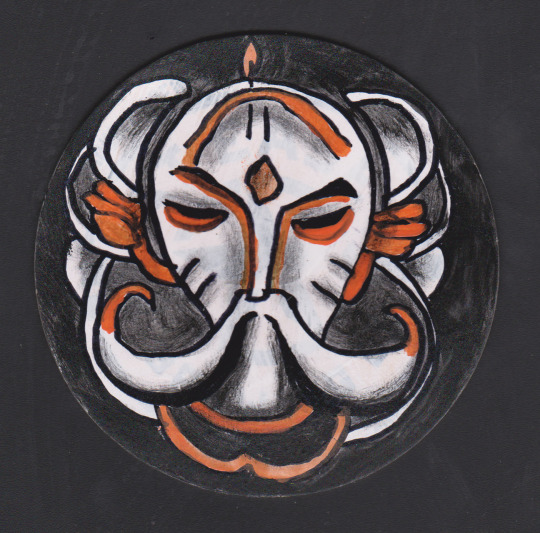
Everything I've ever done that's valuable is something I was afraid to try.
#intheory#sacredtruths#Ganesh#philosophy#notthinking#LogicalEquivalence#thoughtexperiment#meaning#acrylic#painting#artoftheday#artists on tumblr#artwork#dailyartwork#outsiderart#lowbrowart#kunst#flomm#sadahirecoasters#handpaintedbeercoaster#perspective#Amy Chua#affraidtotry#valuable#experience#wisdom#truth
4 notes
·
View notes
Text
Guardians of the Future: A Simple Test for Humanity
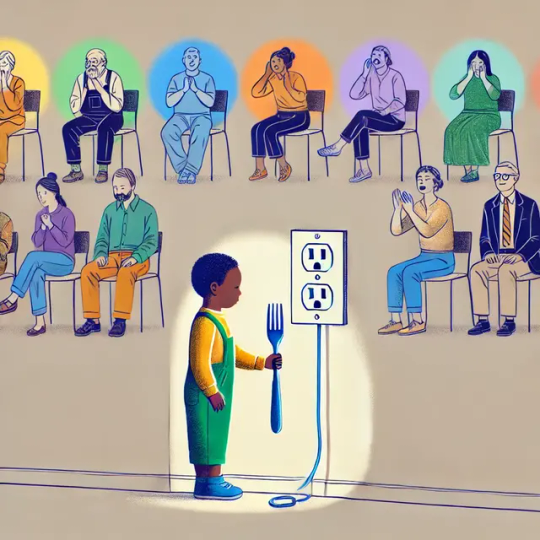
1. The Test
Imagine a room. In the center stands a child, slowly reaching for a light socket with a fork. One by one, every adult on the planet cycles through the room. The test is simple: what happens to the child? Does someone intervene to prevent the inevitable harm, or does the child get shocked? This scenario is more than just a thought experiment—it's a reflection of where we are as a society and where we need to go. It's a test of our awareness, our instincts, and our sense of responsibility.
2. The Responses
If every adult took their turn in that room, we’d see a variety of responses:
The Protectors (Level 50 Guardians): These are the aware, responsible individuals. They understand the danger and step in immediately to stop the child, explaining why sticking a fork into a socket is harmful. They don’t just save the child—they educate, laying a foundation of safety and understanding.
The Hesitant Learners (Level 20-30): These adults recognize something is wrong, but they hesitate. Maybe they don’t fully grasp the extent of the danger, or maybe they’re unsure if it's their place to intervene. They mean well but lack either the knowledge or confidence to act decisively.
The Bystanders (Level 1-10): These individuals do nothing. They might not notice the danger, might dismiss it as insignificant, or assume it's someone else’s responsibility. They represent ignorance, apathy, or simply being "stuck" at a lower level of awareness.
The Saboteurs (Level -10): Shockingly, a few might think it’s harmless, or even amusing, encouraging the child to continue. They symbolize those who, either knowingly or unknowingly, perpetuate harm—the spreaders of misinformation, the enablers of destructive behavior.
The Wildcards: Then there are those whose actions are unpredictable. They might intervene, but in a way that is aggressive or self-serving. They act, but not out of compassion or understanding, rather out of some misplaced desire for power or recognition.
3. The Vision: A Society Where the Child Always Lives
Now, imagine if every adult who entered that room always chose to protect the child. Imagine a world where this was the baseline—where awareness, compassion, and responsibility were universal. This vision is what true societal evolution looks like: a collective leveling up where harm is not only prevented but becomes unimaginable.
In this evolved society:
Universal Awareness: Everyone understands the danger—not just intellectually, but instinctively. Protecting the child becomes second nature.
Collective Responsibility: Each person feels a duty to act, not because they have to, but because they genuinely care about the well-being of others.
Proactive Guidance: The room itself changes. Outlets are covered, forks are out of reach, and children are taught about safety from the start. The environment evolves to prevent harm before it even becomes a possibility.
4. Tying This to Our World Today
This analogy isn’t just about a child in a room—it’s about the choices we make every day. Right now, our society is filled with "light socket" situations: outdated financial systems, harmful policies, and a lack of understanding about the tools that could change our future. Bitcoin, for instance, is a tool that can help redesign the "room"—creating transparency, fairness, and a new standard of responsibility in our financial systems.
Those who have reached higher levels of understanding have a duty to guide, educate, and protect. Not just to react to danger but to create environments where harm is less likely to occur in the first place. It’s about being proactive, not just protective.
5. A Call to Action
So, where do you stand in this test? Are you the protector, the hesitant learner, the bystander, or maybe even the guide who can help redesign the room? Each of us has a role to play in creating a society where the child always lives—where awareness and compassion are the default, not the exception.
We need to level up, individually and collectively. This isn’t just about protecting the child in front of us—it’s about changing the entire system so that no child ever faces that danger again. It’s about building a world where our actions today shape a safer, more enlightened tomorrow.
If this vision speaks to you, consider how you can contribute. Learn, teach, advocate. Whether it's embracing new technologies like Bitcoin, educating those around you, or simply choosing to intervene when you see harm, every action counts. Together, we can become the Guardians our world so desperately needs.
Take Action Towards Financial Independence
If this article has sparked your interest in the transformative potential of Bitcoin, there's so much more to explore! Dive deeper into the world of financial independence and revolutionize your understanding of money by following my blog and subscribing to my YouTube channel.
🌐 Blog: Unplugged Financial Blog Stay updated with insightful articles, detailed analyses, and practical advice on navigating the evolving financial landscape. Learn about the history of money, the flaws in our current financial systems, and how Bitcoin can offer a path to a more secure and independent financial future.
📺 YouTube Channel: Unplugged Financial Subscribe to our YouTube channel for engaging video content that breaks down complex financial topics into easy-to-understand segments. From in-depth discussions on monetary policies to the latest trends in cryptocurrency, our videos will equip you with the knowledge you need to make informed financial decisions.
👍 Like, subscribe, and hit the notification bell to stay updated with our latest content. Whether you're a seasoned investor, a curious newcomer, or someone concerned about the future of your financial health, our community is here to support you on your journey to financial independence.
Support the Cause
If you enjoyed what you read and believe in the mission of spreading awareness about Bitcoin, I would greatly appreciate your support. Every little bit helps keep the content going and allows me to continue educating others about the future of finance.
Donate Bitcoin: bc1qpn98s4gtlvy686jne0sr8ccvfaxz646kk2tl8lu38zz4dvyyvflqgddylk
#GuardiansOfTheFuture#SocietalGrowth#CollectiveResponsibility#Awareness#HumanEvolution#LevelingUp#ReflectiveWriting#ThoughtExperiment#BitcoinForChange#FinancialRevolution#Philosophy#SocialAwakening#SelfGrowth#ProtectTheFuture#AnalogiesForChange#FutureOfHumanity#PersonalResponsibility#UnpluggedFinancial#EvolvingTogether#HopeForHumanity#bitcoin#financial empowerment#digitalcurrency#finance#financial experts#blockchain#financial education#globaleconomy#cryptocurrency#unplugged financial
1 note
·
View note
Text
Can AI Become the Ultimate Data Analyst? Exploring Coginiti AI’s Role
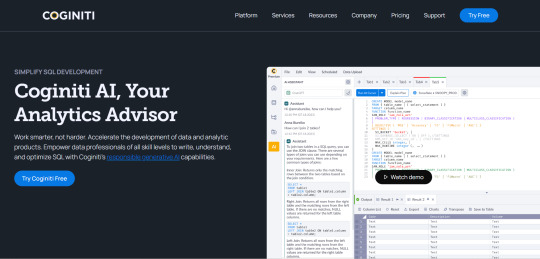
As AI continues to evolve in data analytics, the question arises: Could AI-powered tools like Coginiti eventually become the ultimate data analysts? Let’s explore this scenario.
Scenario: Imagine a future where AI tools manage every aspect of data analytics—from writing complex queries to identifying patterns and providing actionable insights—all with minimal human input.
Analysis:
Potential Benefits:
Efficiency at Scale: AI could handle enormous volumes of data, delivering insights faster and more consistently than humans.
Cost Reduction: Automation could significantly lower costs associated with hiring and training large data teams.
Challenges:
Human Judgment: While AI can process data, it lacks the nuanced understanding and judgment that data analysts bring, especially when it comes to interpreting results within a specific business context.
Data Privacy Concerns: Relying on AI to manage data also raises privacy and compliance issues, requiring careful oversight.
Do you believe AI analytics tools like Coginiti could replace human analysts? What are the limits of AI in data interpretation? Share your thoughts!
Join the conversation about the future of data analytics with Coginiti AI. What role do you think AI will play in shaping data-driven decisions?
#FutureOfData#AI#CoginitiAI#DataAnalytics#Automation#DataScience#ThoughtExperiment#BusinessIntelligence#Discussion#TechInnovation
0 notes